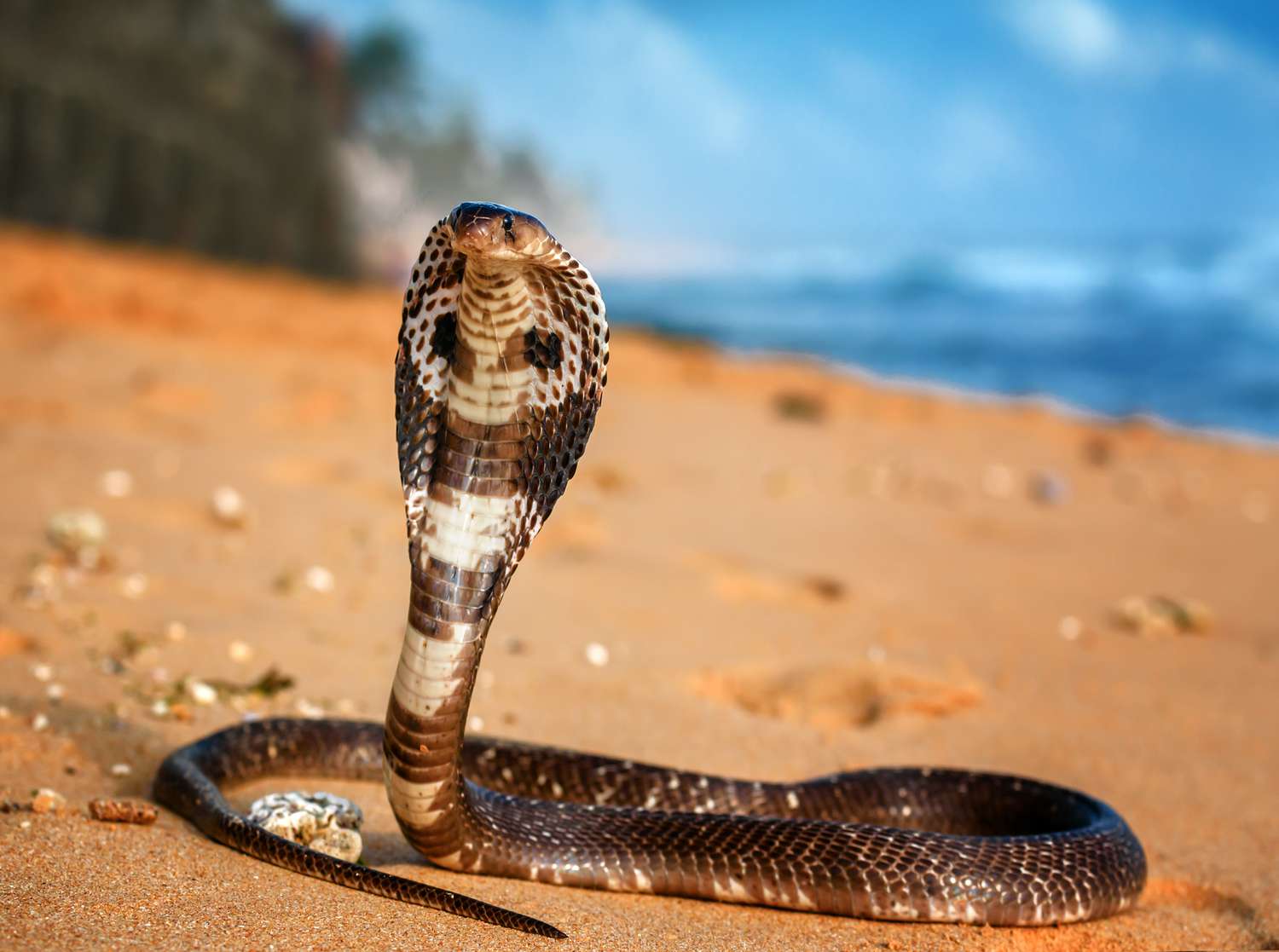
Ever wondered about the king of snakes, the king cobra? This slithery creature holds a mix of fascination and fear for many. King cobras are not just any ordinary snakes; they're the longest of all venomous snakes, and their presence demands respect. But what else is there to these majestic reptiles beyond their fearsome reputation? From their unique hunting methods to their surprising social behaviors, king cobras are full of surprises. Ready to get the lowdown on these fascinating creatures? Let's shed our fears and slide into the world of king cobras, uncovering ten facts that will change the way you see these serpentine sovereigns.
Key Takeaways:
- King cobras are the world's longest venomous snakes, reaching up to 18 feet in length. Their distinctive hood and neurotoxic venom make them fascinating and formidable creatures.
- These solitary snakes primarily eat other serpents and can survive for months without food. Their unique nesting behavior and long lifespan make them crucial to their ecosystem.
Understanding the King Cobra
King cobras are not only fascinating but also one of the most iconic snakes in the world. Known scientifically as Ophiophagus hannah, their name translates to "snake-eater," which hints at their unusual diet. These serpents are revered and feared in equal measure across various cultures due to their imposing presence and potent venom.
-
King cobras are the world's longest venomous snakes. On average, they can reach lengths of up to 18 feet, though most are around 12 to 15 feet long. This size allows them to look directly into the eyes of a standing human.
-
They have a distinctive hood. When threatened, king cobras can spread their neck ribs to form a hood, making them appear larger and more intimidating to potential threats.
The Diet of a King Cobra
Understanding what these majestic creatures eat is crucial to appreciating their role in the ecosystem.
-
King cobras primarily eat other snakes. Their diet is mainly composed of other serpents, including pythons, rat snakes, and even venomous snakes. They have immunity to the venom of other snakes, making them apex predators in their environment.
-
They can survive for months without food. After consuming a large meal, a king cobra can go several months without eating again. This adaptation is beneficial during periods when prey is scarce.
King Cobra Habitat and Distribution
Where these snakes live and how they have adapted to their environments are key aspects of their survival.
-
They prefer forested areas. King cobras are found in dense highland forests, but they can also adapt to living in mangroves and bamboo thickets. Their habitat range extends across Southeast Asia, including India, China, Indonesia, and the Philippines.
-
King cobras are solitary animals. They are rarely seen with other snakes unless it is mating season. Their solitary nature means they have large territories that they roam and hunt within.
The Venom of a King Cobra
The venom of a king cobra is not only a tool for hunting but also a means of defense.
-
Their venom is neurotoxic. The venom affects the respiratory centers in the brain, causing paralysis and even death due to respiratory failure. This makes their venom particularly dangerous to humans and their prey.
-
A single bite can deliver a lethal dose. King cobras can inject up to 7 milliliters of venom in a single bite. This amount is enough to kill 20 people or even an elephant.
Reproduction and Lifespan
Reproduction is a fascinating aspect of the king cobra's life cycle.
-
King cobras are the only snakes that build nests. Females meticulously construct nests from leaves and debris, where they lay their eggs. This unique behavior shows a level of parental care not seen in other snakes.
-
They have a long lifespan. In the wild, king cobras can live up to 20 years. This longevity, combined with their solitary nature, means a king cobra can have a significant impact on its environment over its lifetime.
A Final Slither Through King Cobra Facts
We've journeyed through the fascinating world of the king cobra, uncovering truths that debunk myths and illuminate this creature's unique place in nature. From their impressive length, making them the longest venomous snake, to their surprising diet of other snakes, these facts highlight the king cobra's distinctiveness. Their role in ecosystems as both predator and prey, along with their cultural significance in various societies, underscores their importance beyond just their venomous bite. Understanding these aspects helps foster respect and promotes conservation efforts for these majestic serpents. Remember, knowledge about such creatures encourages coexistence and appreciation for the biodiversity that enriches our planet. Let's carry forward this newfound respect and curiosity for the king cobra and all wildlife, recognizing their vital roles in the world's natural tapestry.
Frequently Asked Questions
Was this page helpful?
Our commitment to delivering trustworthy and engaging content is at the heart of what we do. Each fact on our site is contributed by real users like you, bringing a wealth of diverse insights and information. To ensure the highest standards of accuracy and reliability, our dedicated editors meticulously review each submission. This process guarantees that the facts we share are not only fascinating but also credible. Trust in our commitment to quality and authenticity as you explore and learn with us.


